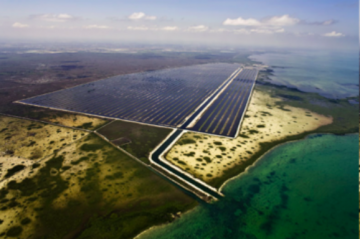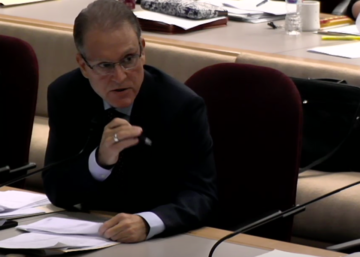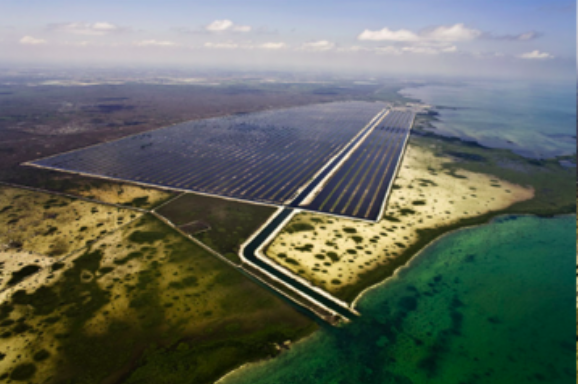Imagine your company violated environmental laws, harmed drinking water resources, and was required by regulators to clean up its mess. Next, imagine that your company was able to charge its customers for the required cleanup, and additionally make a profit for its shareholders. Not a bad deal if you can get it, right?
Yet, that’s the deal FPL that was granted last year by the Florida Public Service Commission (PSC). The price tag for its remediation project is over $200 million. Moreover, FPL is not making timely progress in meeting its environmental compliance requirements stemming from its violations of water quality laws.
Clearly, customers and clean water are taking it on the chin.
Pollution & Profits
FPL’s leaking cooling canal system at its Turkey Point plant has been polluting and harming adjacent ground and surface waters for decades. FPL knew or should have known in 1978, or by 1992 at the latest, that its cooling canal system was causing an underground hyper-saline contamination plume spreading well beyond the boundary of the plant’s cooling canal system and harming adjacent waters and the Biscayne Aquifer. Yet, FPL negligently failed to act on the growing impact of the pollution.
The cooling canals are 10 square miles of unlined canals excavated in the 1970’s and now support the  operation of FPL’s aging nuclear reactors – Units 3 & 4. FPL’s operation of the cooling canal system violated its federal permit, and state and local water quality standards which led to environmental remediation compliance requirements placed on it by the Florida Department of Environmental Protection (DEP) and Miami-Dade County Department of Environmental Resources Management (DERM). FPL brazenly asked for customers to pay for the clean-up. The PSC, as part of last year’s annual environmental cost recovery docket, disappointingly approved FPL’s request.
operation of FPL’s aging nuclear reactors – Units 3 & 4. FPL’s operation of the cooling canal system violated its federal permit, and state and local water quality standards which led to environmental remediation compliance requirements placed on it by the Florida Department of Environmental Protection (DEP) and Miami-Dade County Department of Environmental Resources Management (DERM). FPL brazenly asked for customers to pay for the clean-up. The PSC, as part of last year’s annual environmental cost recovery docket, disappointingly approved FPL’s request.
In its order approving cost recovery from FPL’s customers, the PSC also allowed a sizable portion of the clean-up costs to be capitalized – which means in addition to rate recovery for operations and maintenance expenses, FPL is also recovering a revenue requirement on investments it made to meet the DEP and DERM compliance requirements. A majority of the revenue requirement is a return (effectively profits) to FPL shareholders.
This year, we have a clearer picture of the costs being shouldered by families and businesses in FPL’s territory to clean up FPL’s mess. The operations and maintenance expenses from 2017 through 2019 will total $70.931 million. The revenue requirement from 2017 through 2019 (on about $47 million in capital spending) will total $14.08 million. Given FPL’s debt/equity ratio and 10.55% midpoint return on equity, more than half of the $14.08 million of the revenue requirement will go to shareholder profits. FPL will continue to reap millions of dollars in annual profits well into the future.
FPL’s Non-Compliance
If the financial impact isn’t offensive enough to FPL customers, the Company also is not meeting the  requirements of its DERM Consent Agreement Addendum (CAA) in a timely fashion. The CAA, signed in 2016, requires FPL to take action to cleanup areas that show high levels of ammonia pollution. Southern Alliance for Clean Energy (SACE) pointed out at the recently completed 2018 environmental cost recovery hearing that, more than 2 years later, FPL has not yet complied with the CAA. FPL has not yet filed an approved-Site Assessment Report or an approved-Corrective Action Plan to address its ammonia pollution – both requirements of the DERM CAA.
requirements of its DERM Consent Agreement Addendum (CAA) in a timely fashion. The CAA, signed in 2016, requires FPL to take action to cleanup areas that show high levels of ammonia pollution. Southern Alliance for Clean Energy (SACE) pointed out at the recently completed 2018 environmental cost recovery hearing that, more than 2 years later, FPL has not yet complied with the CAA. FPL has not yet filed an approved-Site Assessment Report or an approved-Corrective Action Plan to address its ammonia pollution – both requirements of the DERM CAA.
There is clear disagreement between DERM and FPL about the source and scope of the ammonia pollution – with FPL claiming its operation of the cooling canal system is a not a major cause. DERM clearly does not agree with FPL’s assessment and has threatened to assess penalties against FPL. The Company’s continued non-compliance with the DERM CAA could further delay clean-up efforts and impose more costs on customers.
The PSC will vote on whether to approve continued cost recovery on December 11th. The PSC’s staff astonishingly ignored evidence produced at this year’s hearing of FPL’s non-compliance in recommending that it is reasonable for customers to keep paying for the clean up. So, FPL’s customers shouldn’t hold their collective breath for a PSC denial of cost recovery. Worse yet is that experts have said that FPL’s remediation plan won’t work.
The silver lining in this predicament for FPL customers is that the Office of Public Counsel (OPC) appealed the Commission order approving FPL’s rate recovery from last year’s environmental cost recovery docket. OPC argues, appropriately, that the environmental cost recovery law is not meant to allow utilities to collect money for environmental compliance placed upon them through violations of law. The case at the Florida Supreme Court has been fully briefed and oral argument is set for February 6, 2019.
FPL Continues to Embrace Outdated Technology
The mess at Turkey Point begs a question: why hasn’t FPL transitioned away from the antiquated cooling canals and moved to current technology – such as cooling towers? After all, cooling tower technology is permanent, cost-effective and currently being used by Unit 5 at FPL’s Turkey Point plant. That’s a question that you can expect will be asked by the U.S. Nuclear Regulatory Commission (NRC), and a federal judge in a Clean Water Act lawsuit.
FPL filed a subsequent relicensing application in 2017 with the NRC to extend the life of the Turkey Point reactors through 2053. The FPL application assumes the continued operation of the leaking cooling canal system. SACE has intervened in the NRC proceeding to ensure that the NRC takes a hard look at the environmental mess at Turkey Point and evaluates reasonable alternatives, like current cooling tower technology. Other intervening parties include NRDC, Miami Waterkeeper, and Friends of the Earth. An initial hearing on the intervenors’ challenges was held this week in south Florida.
Meanwhile, a lawsuit filed by SACE, Tropical Audubon, and Friends of the Everglades against FPL for violating the federal Clean Water Act continues to move forward. The suit aims to hold FPL accountable and craft a permanent solution to FPL’s leaking cooling canals. A trial is set for March 2019.
Stay tuned. SACE will keep you updated on the continuing developments at Turkey Point.



